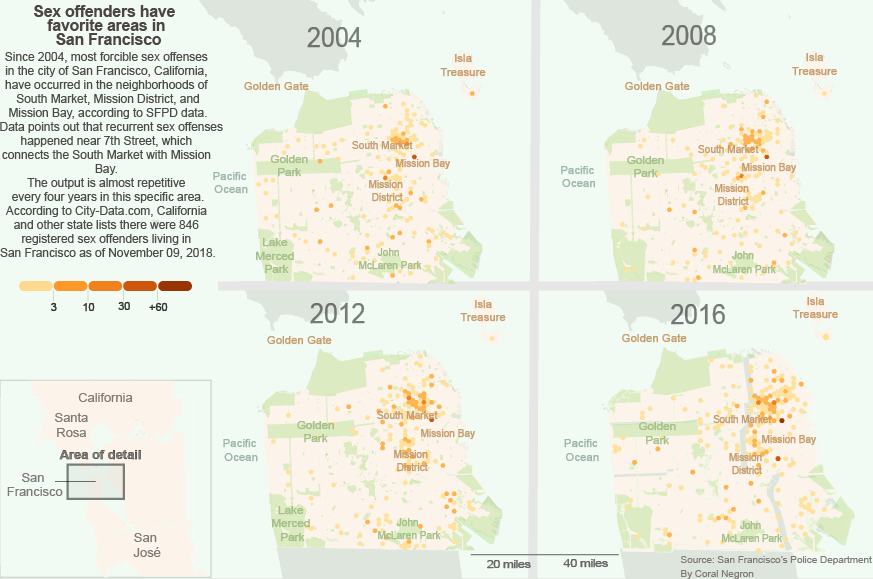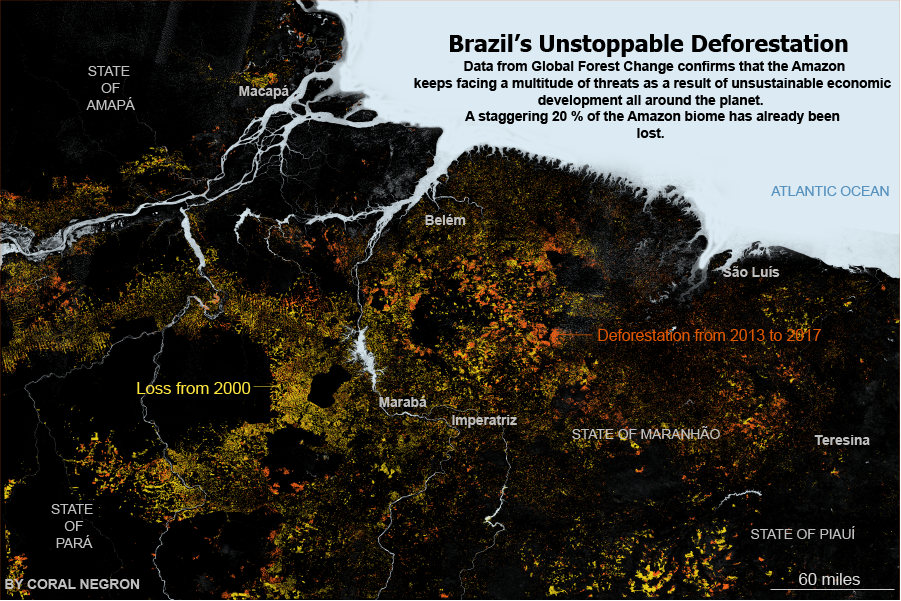Worthy of Remembrance
Text parsing, analytics, and d3.js interactive data visualization of headlines.
Text parsing, analytics, and d3.js interactive data visualization of headlines.
Tools: JavaScript, D3.js, Illustrator
Tools: JavaScript, D3.js, QGIS, Leaflet, Mapbox
Tools: JavaScript, D3.js, QGIS, Leaflet, Mapbox, Illustrator

San Francisco's Sex Crimes

Forgotten Waters of New York

Deforestation in Amazon
Tools: WordPress, Final Cut Pro, Adobe Premiere
Summary: Under the guise of tackling the economic crisis in Puerto Rico, the Department of Education started to close schools in 2010. Ten of these schools were in Ponce, municipality that requested the Government of Puerto Rico permission to dispose of the structures and to rebuild them to make profitable businesses. The structures were given to Ponce to dispose and use as they wanted, but were left to rot in disuse. I proved this by perusing hundreds of documents from the Department of Public Affairs, resolutions from the Municipal Legislature, directives from the mayor’s office and visiting the structures and documenting their condition. This story it turned out to be told the best using pictures and articles divided in segments. Something that remains to be done is a map with each closed school by the Department of Education that could serve as a registry of the hundreds of schools closed so far in Puerto Rico.
Summary: A substantial part of my journalistic responsibilities in La Perla del Sur was being up to date with the decisions made in a dozen local town legislatures in the southern part of Puerto Rico.Last August I was distressed when I found out that the Municipality of Yauco was working on establishing an ordinance that would provide a safe home for victims of a flood that had occurred almost a decade ago (2008). I requested a list of the persons affected in this flood and the details of the disbursement of funds to them.I went to every house listed on the document provided to me by the secretary of the legislature, so I could know first-hand their present situation and I was aghast to find out that some of them were already deceased. Therefore, funds were being requested for people that were already dead. Shockingly, funds were being requested that had already been requested and never given to the victims. The first request was done by the then mayor, and now senator, Abel Nazario, but due to “inconsistencies” of the municipality in the process of delivering the documents, the process was continuously interrupted. This information was confirmed by an analyst from the Office of the Commissioner of Municipal Affairs, who requested to not be identified and was not available for further interviews. That is why I decided to tell the story with the evidence of the requests for monies and the history of the victims. What I desired the most was to have the Director of Housing, ex director of the Office of Federal Programs, to grant me an interview and provide evidence about what was done with that money, but she was not willing to go on record.
Summary: On December 26, 2016, former police officer Guarionex Candelario Rivera was found guilty of assassinating three fellow police officers in the municipality of Ponce. Notwithstanding, the trial brought to light various conflicting theories that got me to speak with diverse parts of the headquarters for the State Police in Ponce, and civilians that were acquainted with the convict. That is how I found a pattern of abuse and bullying in the Police Department where Candelario Rivera worked, that may have triggered the massacre. While I gathered more information about this pattern, the more hostile was the process of interviewing high-ranking officers and seeking documents. The police department spokesman insisted that the evidence requested was confidential, thwarting my investigation. That is why, after the conviction, I managed to secure an interview with Candelario Rivera that ended up published in a multi-media format. Sadly, I still wait for the opportunity to publish the letters that Candelario Rivera wrote to the Office of Public Integrity of the Police Department, denouncing the situations he encountered in his work-place.